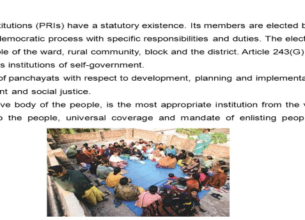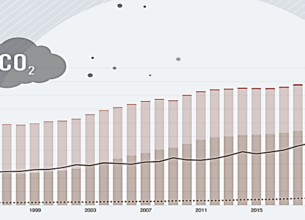NATURAL SIGNS OF FLOODS FOR URBAN AREAS
09, Aug 2019

Prelims level : Environment- Disaster Management, Climate Change
Mains level : GS-I- Changes in critical geographical features (including waterbodies and ice-caps) and in flora and fauna and the effects of such changes. GS-III- Conservation, environmental pollution and degradation, environmental impact assessment. GS-III- Disaster and disaster management.
Why in News?
- A study in the Journal of the British Academy has found that indigenous knowledge on how nature warns of flooding is relevant in urban areas as well.
Highlights:
- Climate change and population growth put millions of people at risk of increasingly unpredictable weather patterns.
- More than 3 million urban dwellers could be at risk of flooding from extreme rainfall by 2050 as climate change brings more unpredictable weather hazards, the study said.
- According to a 2018 report for the C40 cities, extreme heat and power blackouts, alongside food and water shortages, are other threats if climate changing emissions are not curbed.
- The study interviewed 1,050 people in 21 rural and urban communities in Ghana, including the capital city Accra and the main city of Tamale in its Northern Region.
Indigenous Knowledge:
- Indigenous knowledge about how to spot flood risks ahead of time could save lives in cities. Indigenous people in Tanzania, Zimbabwe, Myanmar and Ethiopia, for example, use their knowledge to observe and mitigate impacts of extreme climate events such as flooding and droughts.
- Indigenous knowledge can be used as an additional layer to scientific research in designing early warning systems for floods.
Signs of Nature:
- Understanding changes in natural indicators, such as plants, birds and temperatures, could be used to alert urban residents to extreme weather.
- Knowledge transfers that can be made between rural and peri-urban spaces could save lives and livelihoods around the world.
- Researchers documented natural indicators used by indigenous communities to predict floods, droughts and temperature changes.
- The indicators include:
- Links between rainfall patterns and ant behaviour
- Appearances by certain birds
- Flowering of baobab trees
- Observations of heat intensity
- Promoting tree-planting in urban areas could offer further opportunities to apply indigenous knowledge on flora in cities.








